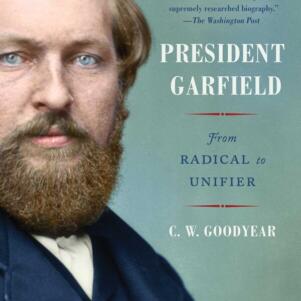Users cash in on YouTube as enabler of creative freedom
By Theodore Bunker | April 11, 2016, 12:27 EDT
 Former Cambridge resident Jenna Mourey aka “Jenna Marbles.” (YouTube)
Former Cambridge resident Jenna Mourey aka “Jenna Marbles.” (YouTube) In 2015, Felix Kjellberg made $12 million making videos for YouTube.com.
Under the name “PewDiePie,” the 26-year-old Swede was the highest earning YouTube personality last year. Despite the star power and six-figure income, this is no Hollywood affair.
Kjellberg’s videos show him playing video games. He began posting them in 2010. Since then, he’s amassed over 11 billion views. He’s currently ranked No. 1 in viewership in his category by Socialblade.com, a site that tracks YouTube statistics.
The Swede is among an untold number of people who have been empowered by the new technology of the Internet and its capacity for sharing content for practically no cost. It has freed these creative (or boring, depending on your point of view) personalities to make a living in their pajamas without leaving their homes.
To former Cambridge resident Jenna Mourey, the transformative power of technology helped bring her fame and fortune.
Mourey shot to stardom back in 2010 after uploading a video of herself titled “Drunk Makeup Tutorial.” Since then, under the name “Jenna Marbles,” her videos have become the 20th most subscribed channel on YouTube, and the most popular channel run by a woman.
She has since moved to a $1 million home in tony Santa Monica, California, and now hosts a podcast, a show on SiriusXM Hits 1, and continues to make YouTube videos for her approximately 16 million regular viewers. To Mourey, it’s all about being genuine.
“Unapologetically be yourself as much as possible,” the Boston University and Suffolk University grad told TheOutift.com in an interview. “Do whatever you want, don’t be scared, take risks, and laugh every day.”
In addition to individual content creators like Kjellberg and Mourey, whole companies have developed out of successful online channels, even before YouTube.
One, Rooster Teeth, currently employs over 90 people to work on various videos produced by the Austin, Texas-based company. When it was formed in 2003, YouTube didn’t exist. Instead of attempting to pitch their ideas to a film or television studio, the founders decided to make movies themselves, filming video games and dubbing over the audio, then posted the productions on their own website.
“We knew everyone was heading in this direction: We had that feeling that technology would get to the point where everybody would eventually be streaming everything online digitally,” co-founder Burne Burns told The Guardian newspaper in the U.K. a year ago. “It was just the way it was going to work.”
Rooster Teeth released its first feature film last year, the science fiction comedy “Lazer Team,” which was funded through the crowdsourcing website Indiegogo.com, raising over $2 million in a month. The movie is available through YouTube Red, a new monthly subscription service that features exclusive content from many of YouTube’s most prominent celebrities, including Kjellberg and the Fine Brothers.
But the Internet takes as easily as it gives. While YouTube empowers content creators, it came up with Red as a way to deal with the advertising income lost to ad blockers, technology that users can use to automatically block advertisements from their browsers.
Professional content creator “Mah-Dry-Bread” broke down in a video the ways YouTubers make money off their content.
Ad revenue is split between YouTube itself and the creator of the video. Once a channel becomes popular enough, the creator may be able to get their videos sponsored in exchange for a video featuring the advertiser’s product.
For additional funding, Mah-Dry-Bread recommends starting a Patreon.com account. Patreon is a website where creators can set up an account to receive regular donations from patrons or other supporters automatically. It has become popular with YouTubers.
Making the transition from YouTube hobbyist to YouTube professional has it’s own share of difficulties. The lack of benefits is one of the larger barriers to going pro, although according to the Yorkshire Post, it’s now possible for citizens of the U.K. to list YouTuber as their full-time occupation on their insurance forms.
Most YouTubers credit their success to a few key areas. Consistency in their videos’ editing and recording, sticking to a schedule, and maintaining contact with their fans.
According to Kjellberg, “it’s important to keep trying new things. If I had kept to just playing horror games, I wouldn’t have the following that I do today,” Kjellberg said in an interview with IconMagazine.se, which dubbed him the “most powerful Swede in the world.”
“I keep testing new things all the time,” he said.
Kjellberg, Mourey, and the heads of Rooster Teeth have all built a strong sense of community among their fans, and they’ve taken that community along into various projects, including video games, movies, podcasts and more.
“The thing that has made YouTube so successful is that you can relate to the people you’re watching to a much higher degree than to the people you see on TV,” Kjellberg said. YouTube allows people to make a living doing whatever they want, so long as people are watching.











